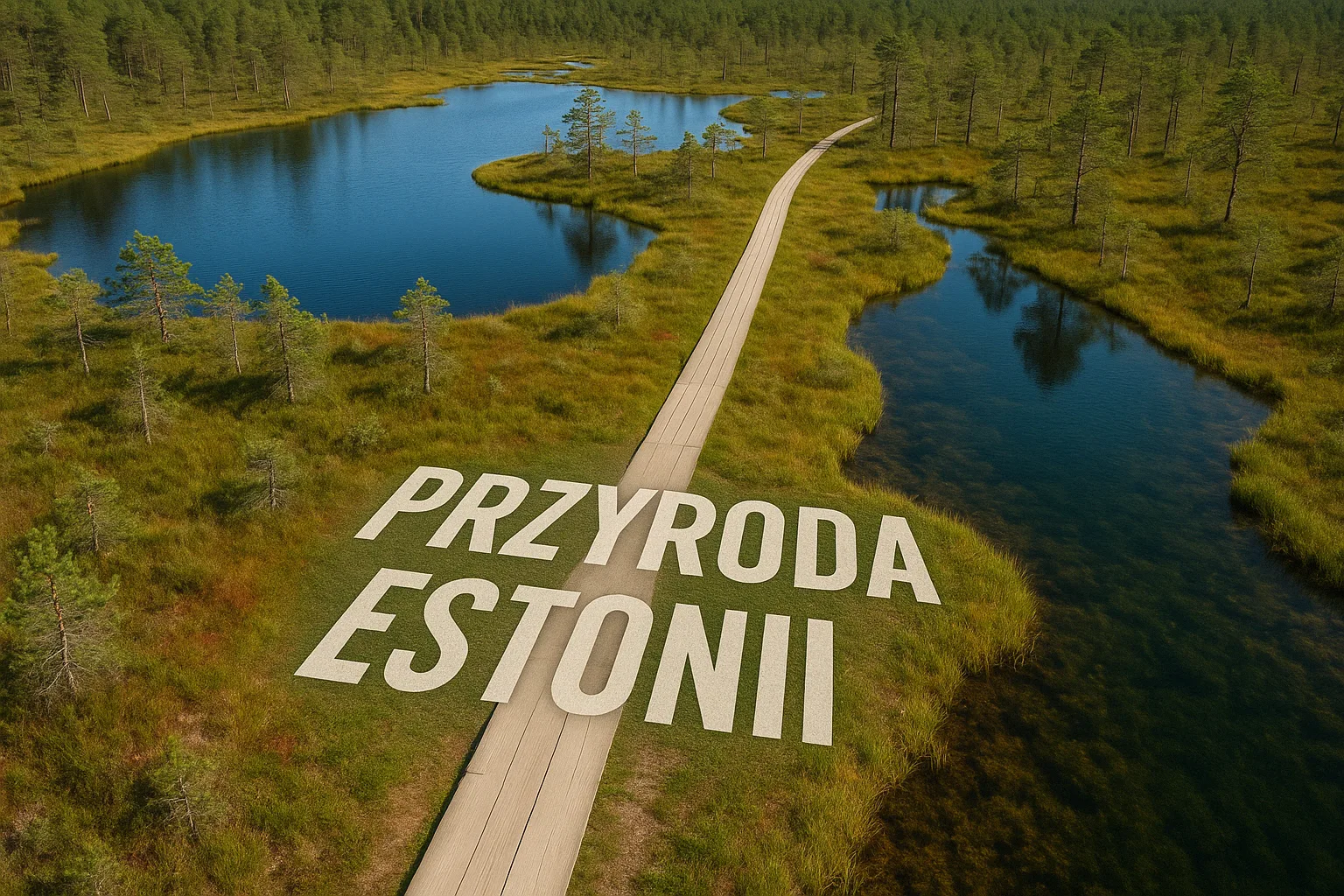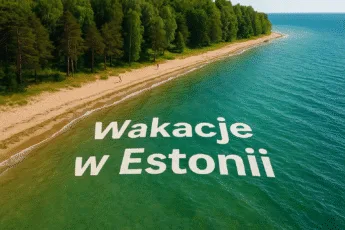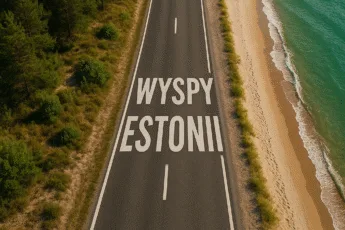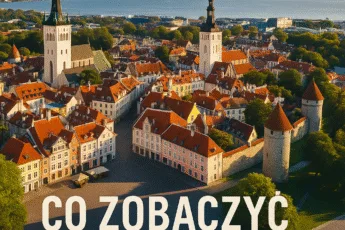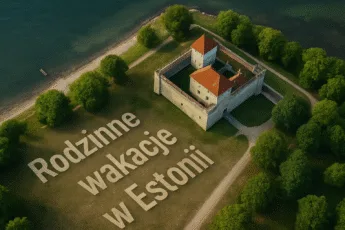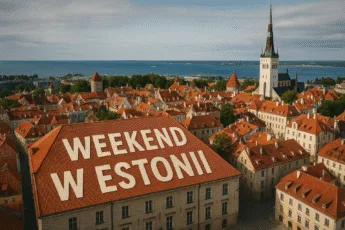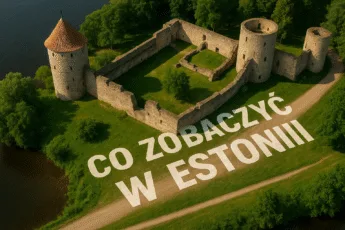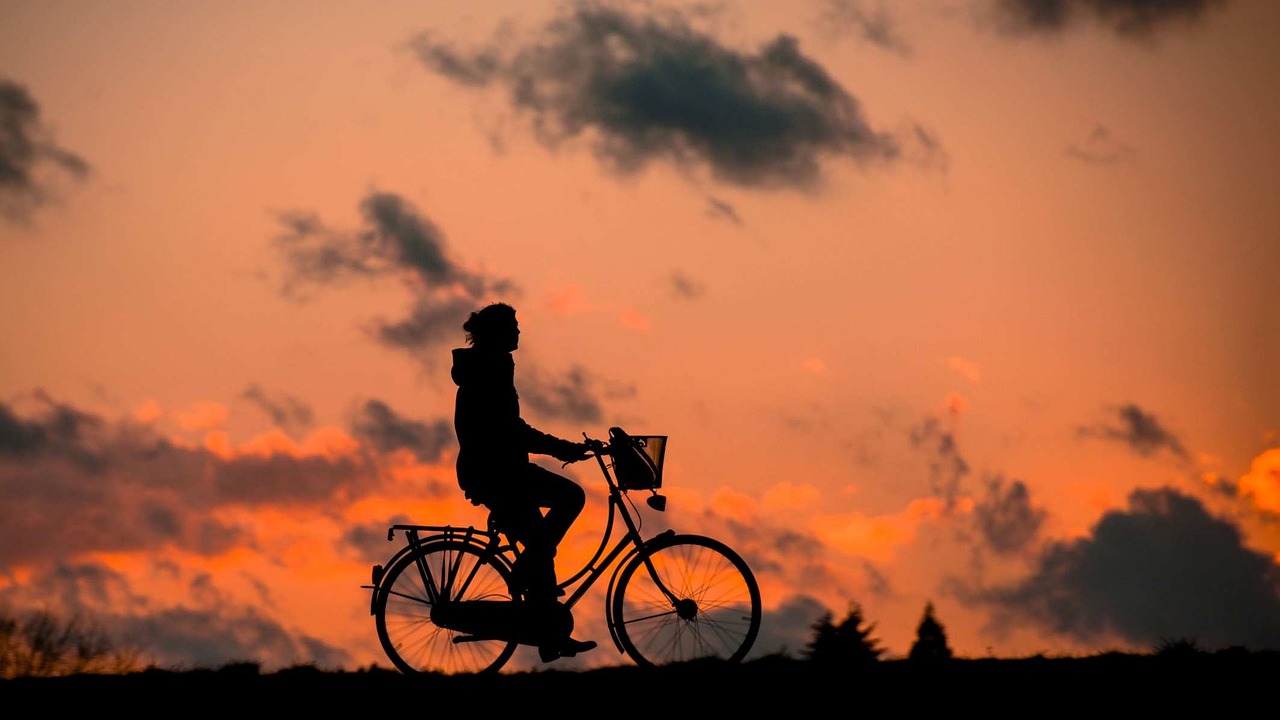Estonia is one of the least populated European Union countries - there are only 30 people per square kilometer. This means one thing: nature has priority here over infrastructure. Over 50% of the country's territory is covered by forests , and the network of lakes, wetlands and peat bogs creates a dense and diverse ecosystem, rarely found on such a scale in North Europe. If you are interested in a full picture of holiday opportunities - from wild nature to coastal beaches and islands - look at the holidays in Estonia 2025 .
6 national parks in Estonia , over 100 nature reserves and dozens of pedestrian and bicycle routes - mostly well -marked and made available free of charge. The country has invested significant funds in the development of the so -called Green tourism, thanks to which in 2023 he was in the TOP10 European directions of Slow Travel according to the list of Travel Tomorrow.
In this guide, we focus only on places that are worth visiting because of their natural value, availability and authenticity. Without generalities, no embellishments - only proven data and real recommendations.
Estonia's most beautiful nature - where to look for peace and greenery?
Estonian nature is not a background for tourism. It plays the main role in the way the country develops and presents to the world. If you are looking for authentic places away from the crowd and infrastructure, Estonia offers one of the most intact regions in Northern Europe.
What distinguishes Estonian nature from Europe?
In Estonia, over 51% of the country are occupied by forests , and another 22% are wetlands - swamps, peat bogs and lakes. This is more than in total in Belgium, the Netherlands and Denmark. 6 national parks , over 100 nature reserves , and a network of over 2,000 km of marked pedestrian routes slightly smaller than the Masovian Voivodeship . Estonia does not develop mass tourism, does not build departments in wild regions and does not conduct industrial felling in the most valuable forests. In practice, this means access to almost intact nature - without sound absorbing screens, crowds and asphalt at every step.
Regions ideal for rest away from civilization
The most natural areas of the country are the western and south-eastern ends of Estonia. In particular, it is worth distinguishing:
- PAKRI Peninsula - spectacular limestone cliffs and the rarest sea birds.
- Matesal - the largest wetland system in the Baltic region, a key point of bird migration.
- Sooma National Park - the area regularly flooded in spring, where the gouge (traditional boats) is used to this day.
- Endel swamps - almost complete lack of buildings, silence, observation towers and peat bogs with platforms.
- Alutaguse forest - inhabited by wolves, bears and lynxes, covered by EU protection programs Natura 2000.
Estonia Lakes - TOP 7 Waters ideal for relaxation and kayaks
Estonia has over 1,400 natural lakes , most of which are in the protected landscape zone. Unlike many European countries, here water reservoirs are not concreted or intensively developed. The banks are overgrown with cane, access to water is free, and the water quality monitored by Keskonnaagentiu - Estonian Environmental Protection Agency.
The largest and purest lakes in the country
In terms of surface, Pejpus (Peipsi Järv), the fourth largest lake in Europe , with an area of over 3,550 km² (half belongs to Estonia). However, for people looking for silence, clean water and the possibility of contact with nature, smaller tanks work better. The cleanest lakes include, among others Viljandi, Rõuge Suurjärv, Pühajärv and Karujärv , which regularly receive a "very good" rating in state reports.
Where to rent a kayak and sail safely?
In most regions with large lakes there are local rentals, often run by municipalities or private persons. Kayak rental prices range from 10 to 20 euros per day. For example:
- Pühajärv (Otepää) - Kayak Center "Otepää seikluspark" operates from May to September, kayaks from 12 €/day.
- Carujärv (Sarema) -"Carujärve talu" rental at the southern shore of the lake, also available SP-Y.
- Rõuge Suurjärv - kayaks available at the "ÖBIKUORE Villa" accommodation database, with the possibility of evening rental.
| Lake | Location | Activity | Availability |
|---|---|---|---|
| Peipsi | Eastern Estonia (Greek with Russia) | fishing, sunbathing, sailing | good roads, many access points |
| Pühajärv | Otepää, the south of the country | kayaks, swimming, bicycle trips around | Easy access, parking, rentals |
| Karujärv | Sarema island | swimming, kayaks, sup | local roads, access to foot or by bike |
| Rõuge Suurjärv | region Võru | night kayaks, observation tower, swimming pool | Access from the center of Rõuge |
| Viljandi Järv | city of Viljandi | kayaks, boats, walking around the lake | close to the center, parking, bathing beach |
Estonian forests - what is worth knowing before a forest trip?
Estonian forests are not homogeneous talls of trees, but a complex ecosystem system, which includes, among others Coniferous, mixed forests, forest peat bogs and alder. In total, they cover over 2.3 million hectares , which is more than half of the country. Over 20% of forests are covered by a form of protection - within national parks, reserves and areas of Natura 2000. Many of them are available touristically thanks to well -maintained pedestrian routes and viewing towers.
When is it best to walk in the Estonian forests?
The season for hiking lasts from May to the end of October. The best weather conditions occur in June and September - the average temperatures are then 16-20 ° C , and the humidity remains at a moderate level. In the summer, watch out for mosquitoes, especially near swamps and lakes. Autumn is a season for mushrooms and observation of color changes in deciduous forests, especially in the Võrumaa and Länmaa region. In winter, many trails are impassable due to the lack of snow removal - the exception is the Lahmaa National Park, where the designated routes are maintained throughout the year.
Can wild animals be found in the forests?
Estonian forests are inhabited by over 600 species of vertebrates , including wolves, lynx and brown bears. According to Estonian Environment Agency from 2023, the population of wolves in the country was 230 individuals, bears - 950, and Rysi - over 600. Meeting with a large predator is, however, unlikely - these animals avoid people and are active mainly at night. Much more often you can see deer, wild boars, hares and black storks. Tourists staying in the Alutaguse or Haanja region can take advantage of the organized nighttime shops for observing wolves and bears - tickets from 30 euros per night with a guide.
- Do not go out of the trail - many areas are strictly protected, entering outside the designated path can result in a ticket (up to € 400).
- Do not leave garbage - the lack of dustbin infrastructure does not mean consent to leaving them.
- Do not ignite the fire outside the designated places - this is punishable by a punishment and a real fire risk.
- Do not feed wild animals - it disturbs their natural behaviors and can be dangerous.
- Do not make noise - in the forests there is a principle of natural silence, especially during the breeding season of birds (April -July).
Estonia national parks - how to plan an active visit?
Estonian national parks are not a symbolic attraction. In 2024, over 25% of protected areas in the country were just on national parks. Walking routes, observation towers and educational boards are an integral part of the nature protection system. Tourist traffic is controlled - but not limited - thanks to well -thought -out infrastructure and precise marking.
TOP 5 Estonian national parks with pedestrian routes
There are six national parks in Estonia, but only five of them have well -developed walking routes and infrastructure for visitors. Here they are:
- Lahmaa - the oldest park in the country (1971), over 100 km of marked routes in the forests, on the coast and peat bogs.
- Soosare (Soomaa) - the famous from the "Fifth Seed" - spring floods that flood roads and create natural channels.
- Karula - region of hills, lakes and deciduous forests. Perfect for families with children - no sharp elevations.
- Matesal - the most important place of bird migration in the Baltic States. Observation towers available for pedestrians.
- Vilsandi - a park also covering part of the Baltic Sea and several dozen islands. Pedestrian access only through the island of Saaremaa.
Infrastructure, parking lots and fees - what do you need to know?
The entrance to all Estonian national parks is free . The infrastructure includes marked routes (usually loops from 1 to 10 km), educational boards, observation towers, shelters and places for a bonfire. Parking is usually free , although in the summer season (July -August) some Lahmaa areas introduce time limits. The routes are regularly maintained by RMK - Estonian Board of State Forests, which also conducts a point assessment of the condition of the surface and facilities (available on the laodusgakoos.ee ).
| Park name | Activity | Difficulty | Sightseeing time |
|---|---|---|---|
| Lahmaa | Walking routes, towers, coasts, villages | low / medium | 1-3 days |
| Soomaa | Walks, chat rooms, swamp routes | average | 1-2 days |
| Carula | Forest routes, lakes, viewpoints | easy | 1 day |
| Maidal | Bird observation, towers, bridges | easy | 1 day |
| Vilsandi | Walks around the island, beaches, boats | average | 1-2 days |
You can find more ideas for natural routes outside national parks in the article what to see in Estonia 2025 - city, nature, islands and relaxation .
Nature reserves - Estonia's wild side for curious about the world
Estonian nature reserves are not created for the comfort of tourists, but to preserve intact ecosystems. In 2024, there were over 100 reserves , of which only a small part is partly available to visitors. Most areas do not have hardened paths, and access to observation points requires good orientation in the field and knowledge of local maps.
Reserve with viewing towers and observation points
In selected areas, platforms were erected for quiet observation of nature - primarily birds and large mammals. The best -prepared reserves are:
- Põltsama Jõe Luhad - low observation towers at seasonally flooded meadows. Thousands of wild geese in spring.
- Endla - observation platforms on peat bogs, the ability to observe cranes and black storks.
- Puhata - a swamp reserve, with chat room points in Link and Wolves. Time limited area - entrance possible only out of breeding season (March -July).
What plants and animals can be found here?
In Estonian reserves, high peat bogs, alder and flood meadows dominate - are habitats of over 1,100 species of vascular plants and 300 species of birds . Particularly valuable are swamp bird populations, such as watercoli (acrocephalus paludicola) and Bąk (Botaurus Stellaris), whose European habitats are shrinking due to drainage. In Puhat and Ohepal, the strict occurrence of the round -leaved sundew (Droser Rotundifolia) - a carnivorous plant covered with strict protection.
- Viidumäe (Sarema) - the only position of Moroszka's raspberry on the island, known for its clean limestone.
- Koigi - a peat bog with platforms on the educational route (3.2 km), the possibility of meeting the gray heron.
- Järvselja - the oldest forest reserve in Estonia, functioning since 1924, a three -fledged woodpecker habitat.
- Luitemaa - a dune coastal reserve with orchids habitats and a 6.5 km walking route.
Tourist and trekking routes - for active and interesting
The Estonian network of pedestrian routes covers over 2,200 km of marked routes , most of which run through forests, peat bogs and coast. The routes are managed by RMK (Riigimets Majandamise Keskus), which cares for their technical condition, information boards, rest points and seasonal availability. Some of the trails are connected to the pan -European route E9 and local sections of the so -called Green tracks.
The most popular walking routes - from easy to advanced
Among the most frequently chosen routes are both beginners (1-3 km) and multi -day trekking by national parks and Natura 2000 areas. The most diverse area is located in Lahmaa and Somaaa, but the longest and most demanding routes lead through southern Estonia (e.g. Peraküla -ähijärve route with a length of 820 km).
| Route | Length | Transition time | Attractions along the way |
|---|---|---|---|
| Viru Raba (Lahmaa) | 3.5 km (loop) | ~ 1 hour | swamps, observation platform, educational boards |
| Riisa (Soomaa) | 4.8 km (loop) | ~ 1.5 hours | Wooden bridge, peat bogs, bird chat rooms |
| Pejõe - Matsal | 7.0 km (one way) | ~ 2–2.5 hours | flood meadows, observation towers, bird habitats |
| Harilaiu (Vilsandi) | 11 km (loop) | ~ 3-4 hours | beaches, dunes, lighthouse KiiPsare |
| Peraküla -ähijärve | 820 km (whole) | 25-30 days | Cross -section of all Estonia: forests, lakes, rivers, villages |
How to prepare? List of things for one -day trekking
Even short trips require proper preparation - most Estonian routes lead through areas without GSM range, without commercial infrastructure and with limited access to drinking water.
- Trekking shoes with a hard sole (min. Class B)
- Offline map - preferably RMK Loodusega Koos or GPX application from Loodusegacoos.ee
- rain jacket (in May - up to 10 days with rainfall/monthly)
- Powerbank + flashlight (part of the routes unlit, no GSM network)
- water min. 1.5 l + high -calorie food
Bicycle trips through Estonian landscapes - where is it worth going?
The Estonian network of bicycle routes is over 1,200 km of marked sections connecting national parks, lakes, the Baltic coast and Natura 2000 areas. Car traffic outside cities is minimal - in some regions it does not exceed 200 vehicles per day . This makes this country one of the safer bicycle directions in North Europe.
Bicycle routes through forests, lakes and parks
The Estonian fragment of the Eurovelo 10 route, which runs along the Baltic coast and crosses the Lahemaa National Park, is the most popular. Equally interesting are regional routes through the Võrumaa region and southern lakes. Some of them are paved forest roads with a low slope, ideal for beginners and families with children.
- Lahmaa Rattatee (68 km) - loop through the Lahmaa Park, with historic manor houses and limestone cliffs.
- JõGeva -Tart (60 km) - a picturesque route through the Pedja River valley and Purmani Lasy.
- Rõuge -Hanja -Rõuge (35 km) - a hilly route through the southern hills, with a view of the lakes and peat bogs.
- Eurovelo 10: Tallinn -Narva (215 HP) - route along the northern coast, partly through protected areas.
- Pärnu -Sooma (54 km) - a section through swamp areas to the Soomaa National Park, with the possibility of continuing on foot or kayak.
Where to rent a bike and how to plan accommodation?
In larger cities (Tallinn, Tartu, Pärnu) there are rental networks of city bikes (e.g. Tartu Smart Bike) and private points at hostels and tourist information centers. Bicycles are borrowed mainly from local operators, e.g. RMK Oandu or Karuskose Talukoht in national parks (Lahmaa, Soomaa). Rental prices: from 8 to 15 euros per day.
Accommodation is best planned in advance - the most offers can be found on visesitestonia.com . On the routes there are: RMK houses, campsites, agritourism and hostels. In the summer season (June -August), popular locations are fully reserved.
Note: Right -hand movement and mandatory bicycle lights after dark apply in Estonia. The helmet is not required legally, but recommended on forest and gravel routes. It is worth having with you:
- spare inner tube and pump - bicycle services outside cities are rare,
- offline map or GPX route (no coverage in forests and peat bogs),
- Reflective vest when driving after dark - obligatory outside the built -up area.
Estonian fauna and flora - meet local species
Estonia is located on the border of two natural zones: Boreal and Moderate. This location, combined with low population and extensive protected areas, makes this country one of the most valuable natural areas of Europe. In 2023, the Estonian Environmental Protection Agency registered over 600 species of vertebrates and 1,400 species of vascular plants , some of which only occur here or has the most numerous populations here.
Rare plants and animals found only in Estonia
Unique animal species include, among others Baltic salmon (Salmo Salar) , whose wild populations survived only in a few Estonian rivers, including Purtse and Keila. The Black Stork (Ciconia Nigra) is nesting here in the original forests of the Karula Park - this is one of the last such complexes in the region. In southern Estonia there is also a low -angle (bombin bombin) - a genre of amphibians covered by strict protection throughout the EU.
, a round -leaved sundew (Droser Rotundifolia) - a carrier peat bog plant, present mainly in the Endla reserve is distinguished , a swamp violet (Viola Uliginosa) grows , recognized as one of the rarest species in Northern Europe.
Observation of birds - where and when best?
In Estonia, the presence of over 300 species of birds , of which at least 200 nest regularly. The best observation period are spring (March -Maj) and autumn (September -October), when millions of individuals from the north of Europe and Asia pass through the country.
- Matsal's National Park - one of the 5 most important migration places in Europe, 7 observation towers.
- Endel swamps - cranes, farts, mud owls and seedlings.
- Virtu and Haeska - points on the west coast, ideal for observing wading birds and sea ducks.
There is an extensive network of wooden towers and platforms in Estonia, often available free of charge. In the field, you can use the Eelurikkus to identify species - updated by the Zoological Institute of the University of Tartu.
10 species that you can find in Estonia parks and forests
- Eurasian lynx ( Lynx Lynx )
- Brown bear ( Ursus Arctos )
- Annual crane ( Grus Grus )
- Round -leaved sundew ( Drosera Rotundifolia )
- Baltic salmon ( Salmo Salar )
- Black Stork ( Ciconia Nigra )
- European roe deer ( Capreolus capreolus )
- Noble deer ( Cervus elaphus )
- Waternight ( acrocephalus paludicola )
- Swamp violet ( Viola Ulicinosa )
Rest over rivers and wetlands - hidden pearls of nature
Estonian rivers and peat bogs do not act as transport or technical channels. In over 80% they retained their natural run, and most of the river valleys are covered by nature protection. Canoeing leads through areas where there are no bridges, asphalt or crowds - this is rest in the most original form offered by North Europe.
The rivers are ideal for kayaking and chillout
The best conditions for rafting are in southern and western Estonia - the rivers are wide, shallow and available from several points. Kayak infrastructure is developed by local municipalities and natural organizations, which provide not only equipment, but also transport and accommodation. Most routes are safe even for children from 6 years old.
| River | Route type | Time | Season |
|---|---|---|---|
| Ahja | classic 1-day rafting | 4-5 hours | May -September |
| Võhandu | Stage route, 2-3 days | ~ 50 km | April -August |
| Pärnu | A calm family route | 2-3 hours | June -August |
| Pedja | Natura 2000 area | 1 day | May -July |
| Kasari | The route through the maidal floodplain areas | 3-4 hours | May -September |
Swamps and peat bogs with wooden platforms - amazing views
Estonian peat bogs are available thanks to wooden footbridges with a total length of over 120 km. Unlike mountain trails, the silence and observation of details counts here: the growth of mossy peat bogs, traces of wild animals, and rare plant species. The viewing platforms are from 3 to 15 meters high and allow observation within a few kilometers without disturbing the environment.
- Virus Raba (Lahmaa) - a classic 3.5 km loop with a platform, entrance at the Tallinn -Narva road.
- Riisa Raba (Soomaa) - a 4.8 km route with access to prams and people with traffic restrictions.
- Kõnnu Suursoo -a less known, 7-kilometer route through an active peat bog in central Estonia.
Nature is close to Tallinn - nature next to the city
Within a radius of 30 km from Tallinn, there are over 20 natural areas with the official status of landscape protection. Most of them are available without having to have a car. A well -developed network of intercity and suburban buses allows you to reach beaches, peat bogs and forests in less than 40 minutes from the city center.
Parks, forests and lakes within a radius of 30 km from the capital
The largest and most diverse natural area around Tallinn is Lahmaa - its southern edge begins 28 km from the city borders. Closer are, among others Pakri cliffs , Virus RABA and Hark -ülemist lake system. The lakes have the status of bathing areas, but in the season (June -August) they act as pedestrian and bicycle routes.
- Virus Raba - peat bog with a viewing platform, 3.5 km loop, entrance at the Tallinn -Narva (E20) road, 40 min by bus No. 151.
- Pakri cliffs - lime cliffs up to 25 m high, 5.6 km walking route with Pakri sea lantern, 50 min by train + 10 min on foot.
- Lake Harku - route around the lake (4 km), grassy beach, observation tower, access by city bus No. 43 from Balti Jam (25 min).
- Nature area of Mremõis -pine forests, 6 km walking route, available with Keila-Joa (train + 2 km walk).
- Lake ülemiste - the largest water reservoir in the Tallinn area, 3 km educational route, bathing ban - drinking water protection area.
Ideas for a half -day trip from Tallinn
The best organized places for a short trip are Viru Raba (with the possibility of returning the same bus as arrival) and Pakri cliffs - available by the Elron railway from the Balti Jaam station to Paldiska (approx. 1 hour). Tourists traveling with children can choose a route around Lake Harku, where there is also a playground and a sandy beach.
Virgin Estonia - the wildest natural regions of the country
In Estonia there are still areas where infrastructure practically does not interfere in the landscape. The wildest areas are not only nature reserves, but also extensive forest complexes, swamp river valleys and border protection zones. They are located away from the main roads and have a population density below 5 people per km² - several times lower than the national average (29 people/km²).
Areas where nature plays the first violin
The least-changed human activities are located in the south-eastern and north-eastern Estonia. These regions are characterized by a lack of development, limited access and functioning without tourist infrastructure. Most are Natura 2000 areas or reserves without shared trails.
- Alutaguse -a forest and bright complex with an area of over 80,000 ha Population of brown bears, wolves and lynxes.
- Puhata - a peat reserve with the lowest population density in the country (2 people/km²). Floodplain, without infrastructure.
- Setomaa (border part of Võrumaa) - an area with dominance of forests and peat bogs. There is an intermediate sundew and a black stork.
- Suursoo - peat bogs in the Kastre commune, inaccessible by car. Research areas of Estonian natural universities.
- PeiPsiveere area - a lamp belt between the Peipsi Lake and the Emajõgi River, closed to traffic from March to August (bird breast period).
No coverage, few tourists, a lot of impressions
In most of the lists, there is no range of mobile networks, and Google maps are outdated or illegible. These areas are visited by less than 500 people annually, and in some cases - like Suurso - no signs of visits (according to RMK data from 2022). In return: total silence, intact landscapes, rare species and real possibility of observing wild animals.
Nature for everyone - Estonia without barriers
Estonia belongs to the few European countries that have implemented the principles of universal access in national parks and on pedestrian routes. According to RMK data (State Forests Board), at the end of 2023, over 60 natural locations were adapted to the needs of people with limited mobility - from parking lots to paths, toilets and viewing towers.
Parks and routes available for people with limited mobility
Adapted routes are not limited to hardening of the surface. Most of them also offer wide bridges (min. 1.2 m), ramps with a slope not exceeding 6% , resting places and information boards with Braille's magazine. The best -prepared ones include:
- RIISA RABA (SOOMAA) - 1.2 km route with a viewing platform, access with a wheelchair, free toilets.
- Vapramäe - an educational path 1 km in a mixed forest, paved surface, boards for blind people.
- Valgesoo (Põlvamaa) - a peat bog with a manual elevator tower, access from the parking lot on a paved route (800 m).
Families with children and the elderly - where will it be comfortable?
Most adapted locations also work for families with children in prams and the elderly. For example, the path around Lake Harku (Tallinn) with a length of 4 km is fully asphalted, and the routes in the Oandu region (Lahemaa) have wide wooden platforms with balustrades. RMK recommends these places as safe and free of horizontal and architectural barriers.
| Object | Amenities | Parking | Route length |
|---|---|---|---|
| Riisa Raba (Soomaa) | Platform, toilet, bridges | asphalt, direct access | 1.2 km |
| Valgesoo (Põlvamaa) | Bridge, tower with ramp, benches | gravel, close to the entrance | 800 m |
| Vapramäe (tartu) | Educational path, Braille boards | hardened, with markings | 1 km |
| Harku Lake (Tallinn) | asphalt, playground, benches | city parking, 3 entrances | 4 km |
| Oandu -Altja (Lahmaa) | wooden platforms, balustrades | Free, at the RMK point | 1.5 km |
Autumn in Estonian forests - golden season for rest
Between mid -September and the end of October in Estonia is the maximum coloring of deciduous trees. During this period, the average daily temperature drops to 8-12 ° C , and the humidity lasts at 75-85%. These are ideal conditions for mushrooming, landscape photography and quiet walks on less frequented forest routes.
Mushrooming, colors and walks among the leaves
The best conditions for harvesting fungi are from mid -September to around October 20. Pretty (boletus edulis), brown mushrooms and chanterelles dominate. In the Viljandima and Võrumaa regions, mushrooms appear massively after two days of rainfall over 10 mm. Protected species also occur in deciduous forests, e.g. Sromotnik shameless - they should not be broken or moved.
In autumn, mixed forests look particularly spectacular: oaks, birches and clones form multi -colored contrasts with pines. The phenomenon of "burning crowns" (intensively red leaves) occurs most often in areas with sour soil - e.g. in the Valgeso reserve and Otepää forests.
Top space for photos and silence
Most autumn routes are short sections up to 5 km, often ended with a lookout tower or a rest point. The best time for photos is 7:30–9: 00 and 16: 30-18: 00, when the sun is low and extracts contrasts in the crown of trees.
- Valgesoo (Põlvamaa) - a peat with a view of maple and birch forests. Power platform 800 m, tower 14 m.
- Elva -Vitipal - 4.2 km route among oak forests, available on foot and by bike. Few tourists, no noise.
- Otepää Loduspark - a classic landscape park with viewpoints and red clones in the Käärik region.
- Rõuge Hinni Kanjon - a unique rock formation with dense deciduous forest, ideal for photos from the bottom of the gorge.
- Pilguse (Sarema) - an old oak forest on the west coast, an open area with a soft light from the sea.
Accommodation close to nature - from houses to campsites
Estonia offers one of the most flexible accommodation systems in North Europe, adapted to nature tourism. At the end of 2023, there were over 1,100 accommodation facilities , of which almost 40% were outside the urbanized areas. The State Board of RMK also runs its own networks of forest shelters, open huts and campsites - available without reservations and fees.
Where to sleep on the lake or in the middle of the forest?
Most facilities are located near the Peipsi lakes, Pühajärv, Rõuge and Karujärv and in the national parks of Lahmaa and Soomaa. It is worth paying attention to RMK shelters - free sheds with space for a bonfire and heating wood. Popular locations (e.g. Oandu, Rannapungerja) should be taken by 16:00 - later they can be occupied.
Camps, glamping and agritourism - what to choose?
RMK campsites are available all year round and located mainly on pedestrian and bicycle routes. In the season (May -September) there are private tarming and agritourism farms - especially in Sarem, Võru and Põlva. The average cost of accommodation in a Safari house or tent is 25-50 €/night/person. In the case of simple RMK forest huts - free of charge, but without a guarantee of space.
| Type | Location | Price | Amenities |
|---|---|---|---|
| RMK shelter | e.g. Nõva, Kauksi, Järvselja | 0 € | shed, fire, wood, forest toilet |
| Tent glamping | Sarema, Võru, Rõuge | 30–50 € | bed, electricity, breakfast, toilet |
| Agritourism | Local villages, e.g. killi-nõmme | 20–40 € | room, kitchen, sometimes sauna |
| Camping RMK | e.g. Luhasoo, Meelva | 0 € | camping site, bonfire, wood |
| Forest House RMK | Soomaa, Lahmaa | from 25 € | beds, stove, minimal equipment |
Ecotourism in Estonia - how to travel in harmony with nature?
Estonia has been implementing system solutions in the field of ecotourism for over a decade. In 2024, over 140 tourist facilities had a local or international environmental certificate, and the country participated in European programs: Green Key, Ecocamp and Sustainable Travel Estonia. The goal is not marketing "eco", but controlled by tourist traffic management without environmental degradation.
Ecological projects and certified places
The most important certification structure in Estonia is EHE - Ehtne Ja Huvitav Eesti ("Authentic and interesting Estonia"). The program supports tourist micro -enterprises that meet the criteria, among others low CO₂ emission, local origin of services and plastic limitations. EHE certified objects can be found, among others in Sarema, Võrumaa, Länmaa and Tartu.
The second level is Green Key - an international certificate awarded to hotels, museums and educational centers. In 2023, it had 59 Estonian facilities, including hotels: Lydia (Tartu), Telegraaf (Tallinn), V SPA (Tartu), as well as RMK nature education centers.
What does "green accommodation" mean in practice?
The EHE or Green Key certified object must meet a minimum of 30 requirements, including:
- use of energy from renewable sources or balancing emissions (e.g. by planting trees),
- complete waste segregation with guests,
- no disposable plastic - also in bathrooms and gastronomic zones,
- local sources of food and handicraft products,
- Possibility to arrive by public transport - or the availability of bicycles.
Estonian ecological initiatives in tourism
- RMK Loodusega Koos - the State Program of Nature Tourism, based on the principles of sustainable access. Maps and infrastructure available free of charge.
- EHE ESTONIA - National System of Certification of Tourist Services based on ecological and social criteria.
- Green Destinations - Estonia as a whole obtained in 2023 the status of the national "green destination" at brown level.
- Estonia Green Movement - NGO promoting practical solutions in non -emission travel, including Bicycle routes and public transport.
Questions and answers - Estonian nature without secrets
Estonian nature does not need advertising - just get to know it well. If you are looking for a place where contact with nature is not an addition, but the basis of travel experience, Estonia gives something that is increasingly difficult to look for in Europe: silence, space, authenticity and wildness under full protection.
